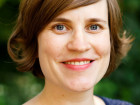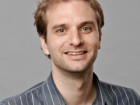- Language german Pages 120
- Publishing Year 2016
-
ISBNs:
- 978-3-95796-080-1 (print)
- 978-3-95796-081-2 (PDF)
- DOI:
- 10.14619/017
- License:
- CC-BY-SA 4.0
Trick 17
Mediengeschichten zwischen Zauberkunst und Wissenschaft
Der Zauber der Medien speist sich aus ihrem Geheimnis: Den Usern von heute sind Laptop, Smartphone oder Tablet eine Blackbox, die ihre Sinne im Bann hält und die Techniktricks im Inneren hinter einer opaken Oberfläche verbirgt. Doch solche Verzauberung ist nicht neu. Um ihr auf die Spur zu kommen, nähert sich dieses Buch der Mediengeschichte der Zauberei an der Schwelle zwischen magischem Moment und Ent-Täuschung. Nicht selten folgt einer geradezu übernatürlich wirkenden Zaubervorführung die wissenschaftliche Erklärung und Offenlegung ihrer Tricks. Ein solcher Akt der Entzauberung mag zwar magische Momente als faulen Zauber demaskieren. Er rückt dafür jedoch die Technologien der Täuschung ins Rampenlicht: Erst die Ausnutzung physikalischer Gesetze, das Konstruieren mechanischer Zauberapparate und das Spiel mit der Wahrnehmung der Zuschauer machen deren ,Verzauberung’ möglich. Sie erlaubt, die Frage nach Wissen, dem medialen Zugriff auf unsere Sinne und dem sinnlichen Zugriff auf unsere Welt erneut zu stellen.




